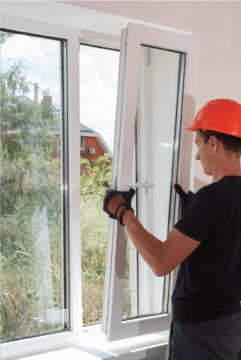The green movement and energy efficiency are impacting all industries, including construction.
We’ve compiled some information to keep you up-to-date on the latest sustainability trends in the industry and help you stay in front of any potential business impacts. Here’s what you should know:
How to Choose Sustainable Building Materials
 The practice of sustainable building aims to preserve resources over long periods of time while being environmentally friendly. Three factors to consider when choosing sustainable materials are energy efficiency, environmentally friendly manufacturing and durability.
The practice of sustainable building aims to preserve resources over long periods of time while being environmentally friendly. Three factors to consider when choosing sustainable materials are energy efficiency, environmentally friendly manufacturing and durability.
- Energy efficient materials aim to prevent energy loss in the building. To achieve this, you’ll want to look for materials that limit heat transfer such as double-paned windows.
- Environmentally friendly manufacturing means that materials were made with as little environmental impact as possible; for example, materials made from recycled plastic or metal. Sustainable materials also would not have had to travel far to get to you, as shipping and transportation have a considerable impact on the environment. A building can even earn LEED credits for sourcing products from your area.
- Durable materials have a long lifecycle. They don’t need to be replaced as often, creating less waste and saving home and property owners money in the long run. In fact, green buildings report up to 20 percent lower maintenance costs than typical commercial buildings.
Sustainable Building Is Here to Stay
There’s no question sustainable building initiatives are on their way to becoming the norm. California recently passed a law mandating solar panels on many single-family homes, and cities like Philadelphia and St. Louis are adopting the more energy-efficient 2018 International Building Code.
In fact, a study from the United States Green Building Council found that the sustainable building sector is outpacing overall construction growth in the U.S. and will continue to rise.
Plenty of national trends are driving the demand for sustainability in the industry:
- Traditional fossil fuel costs are rising while alternative energy costs decrease
- Continuing developments in energy-efficient technologies and designs
- In our current digital age and consumer-driven economy, homeowners are becoming more interested in learning about sustainability and using green products in their homes
Starting Small Is Better Than Not at All
 A homeowner or property owner may not have the budget to solely use sustainable and energy-efficient building materials. Choosing one area of the building or home to incorporate sustainable materials will still make a difference. ABC Supply associates find that windows and roofing materials are often the most popular areas where owners invest in energy-efficient products.
A homeowner or property owner may not have the budget to solely use sustainable and energy-efficient building materials. Choosing one area of the building or home to incorporate sustainable materials will still make a difference. ABC Supply associates find that windows and roofing materials are often the most popular areas where owners invest in energy-efficient products.
From steep- and low-slope roofing materials to roofing insulation to windows and siding, ABC Supply partners with a variety of sustainable brands across multiple exterior building product segments, including:
- Concrete and clay tiles
- Slate roof tiles
- Metal roofing
- Composite shingles
- Modified bitumen roofing
- Built-up roofing
- Roofing insulation
- Replacement and new construction windows
- Siding
You can start small and make a big difference by weaving sustainable products into current and future projects.
Need Help? Stop By.
Take a look at our online product catalog to browse a complete list of products and manufacturers we carry, or stop by your nearest ABC Supply location to chat with a sales representative.
Visit the ABC Supply blog for more information on what’s trending with building materials, like windows, siding and roofing.